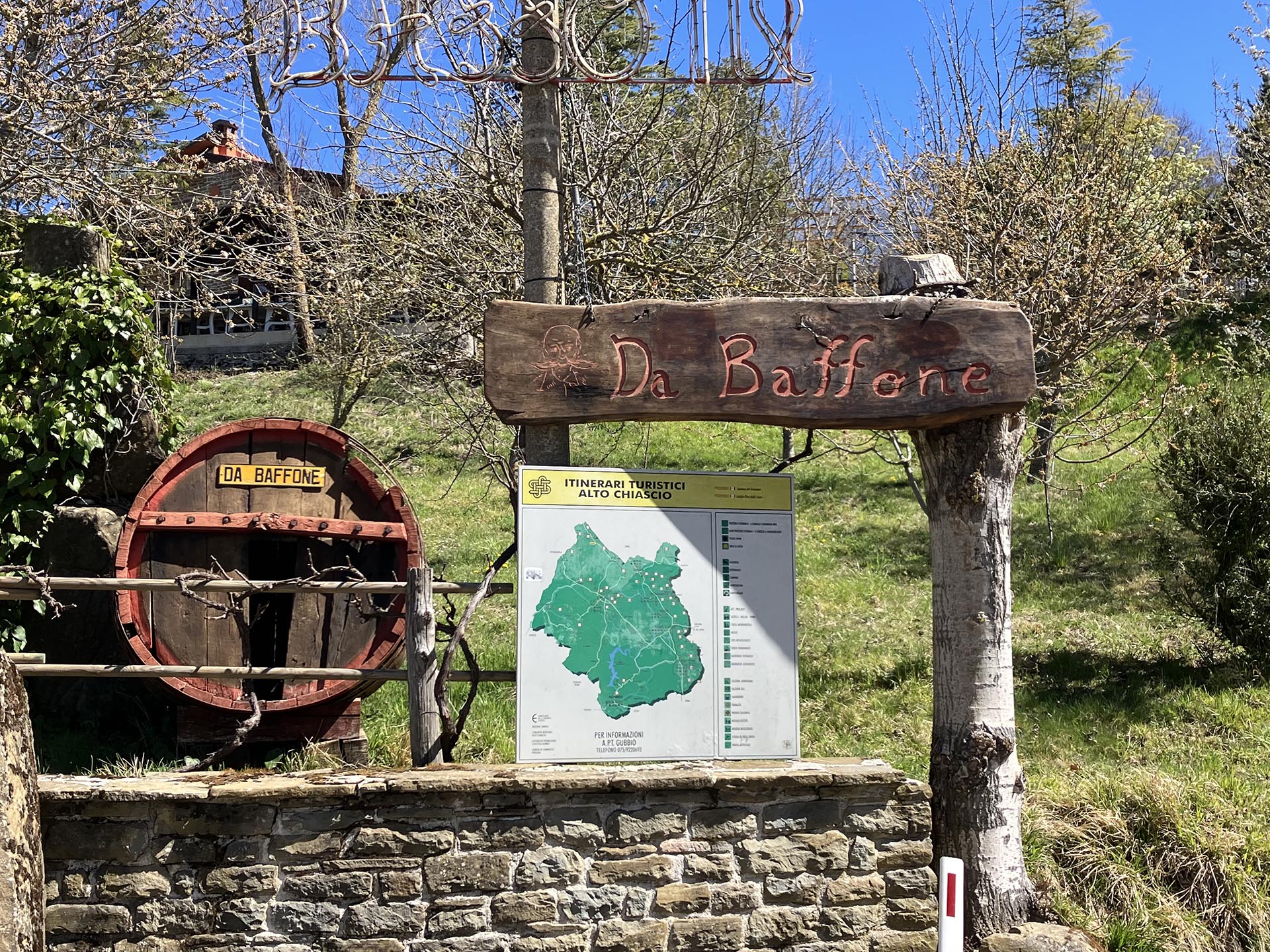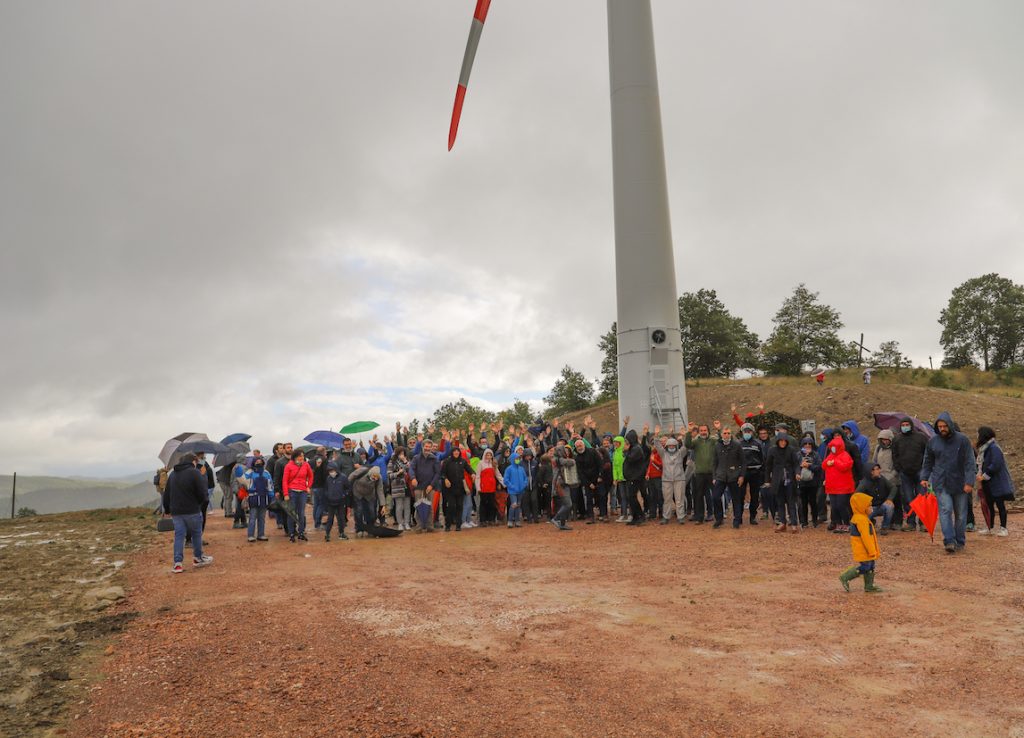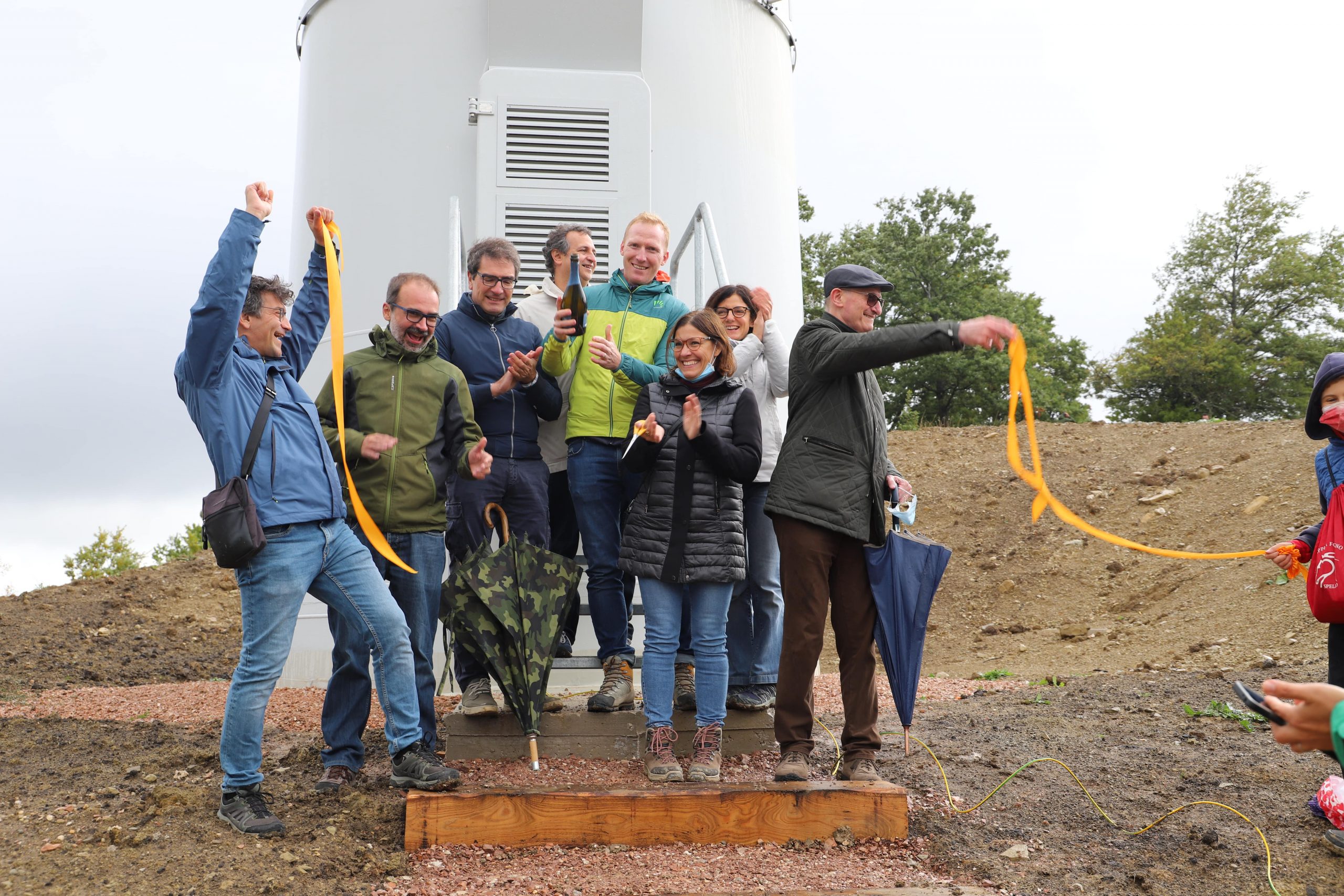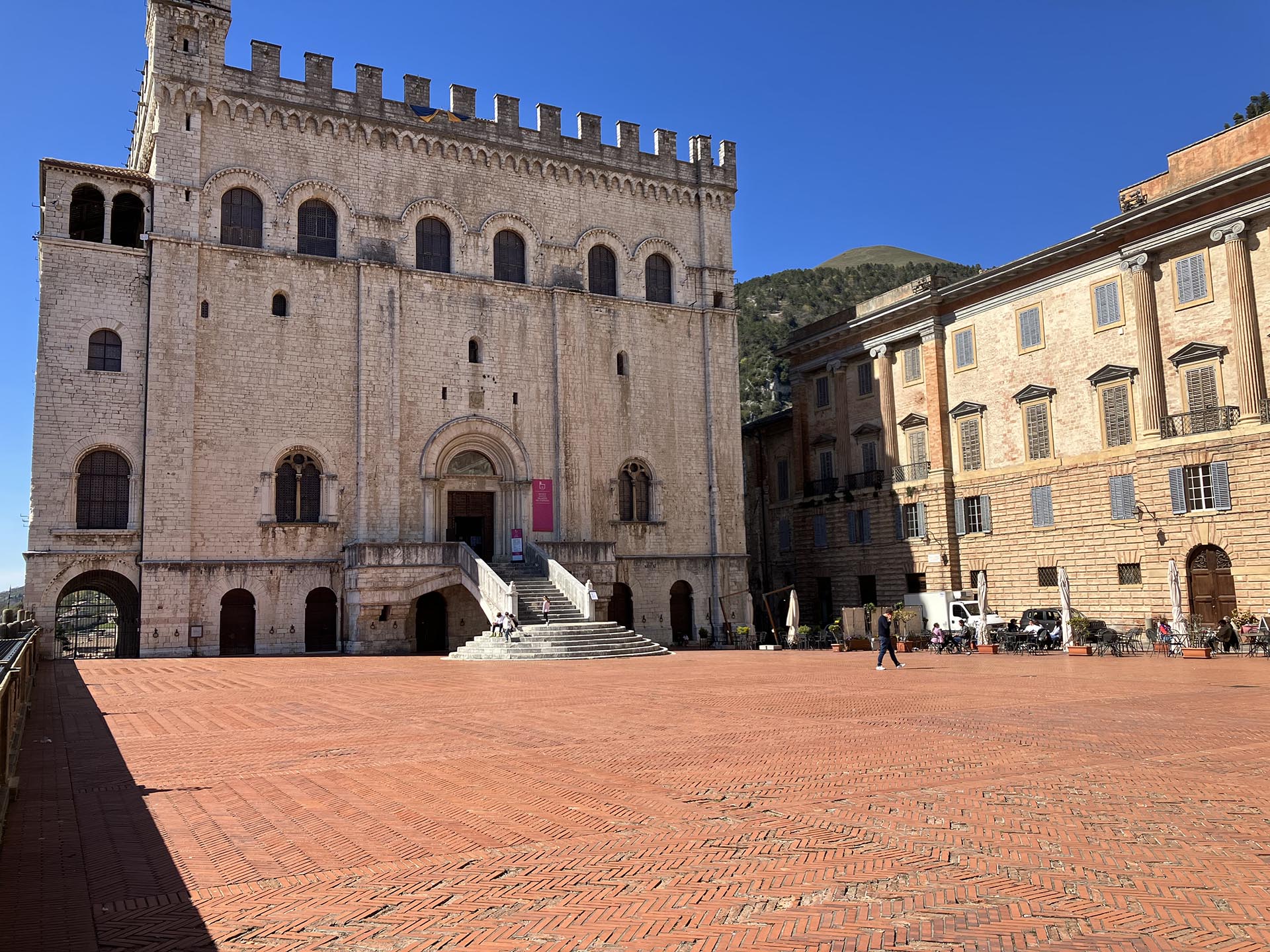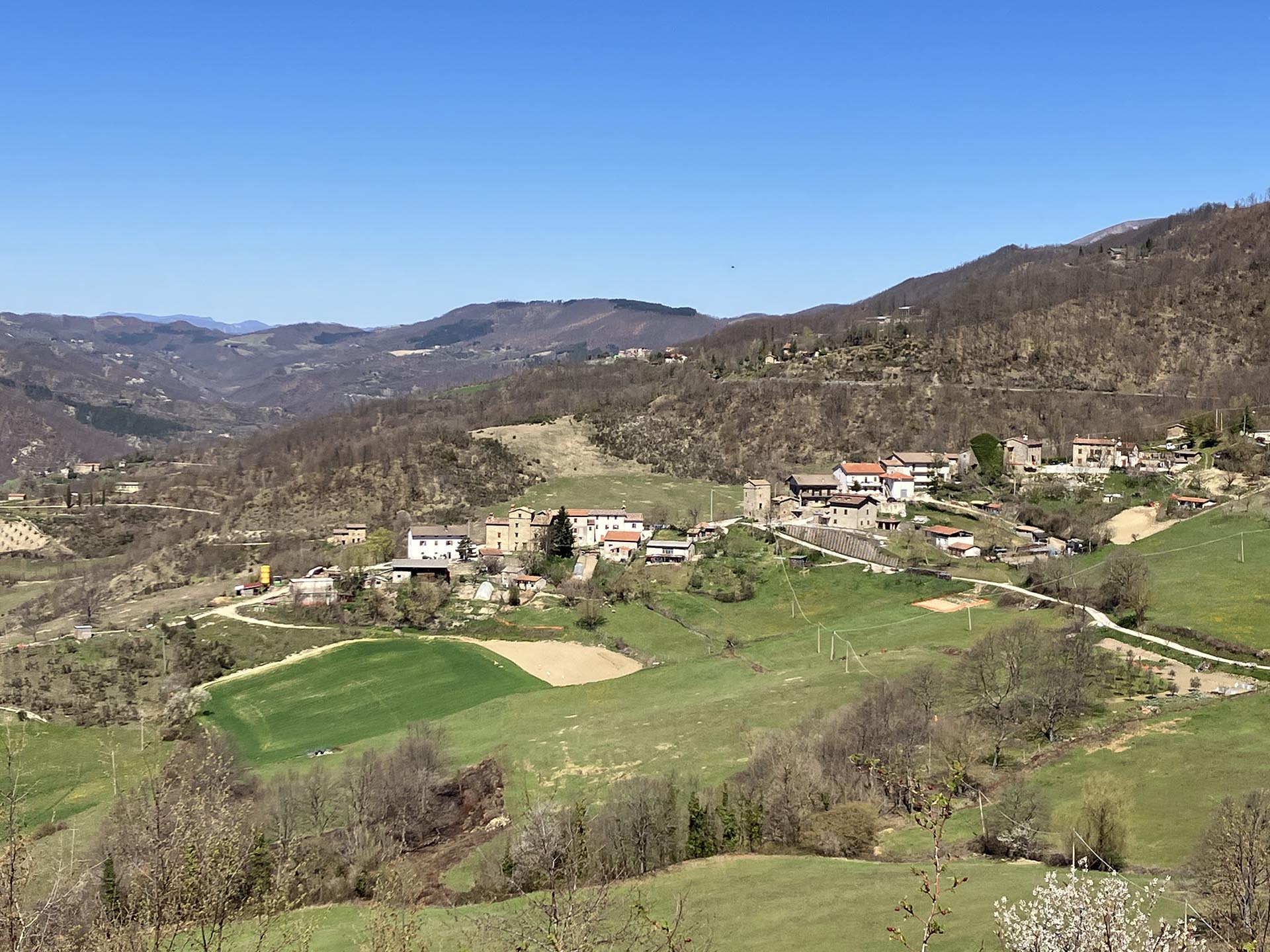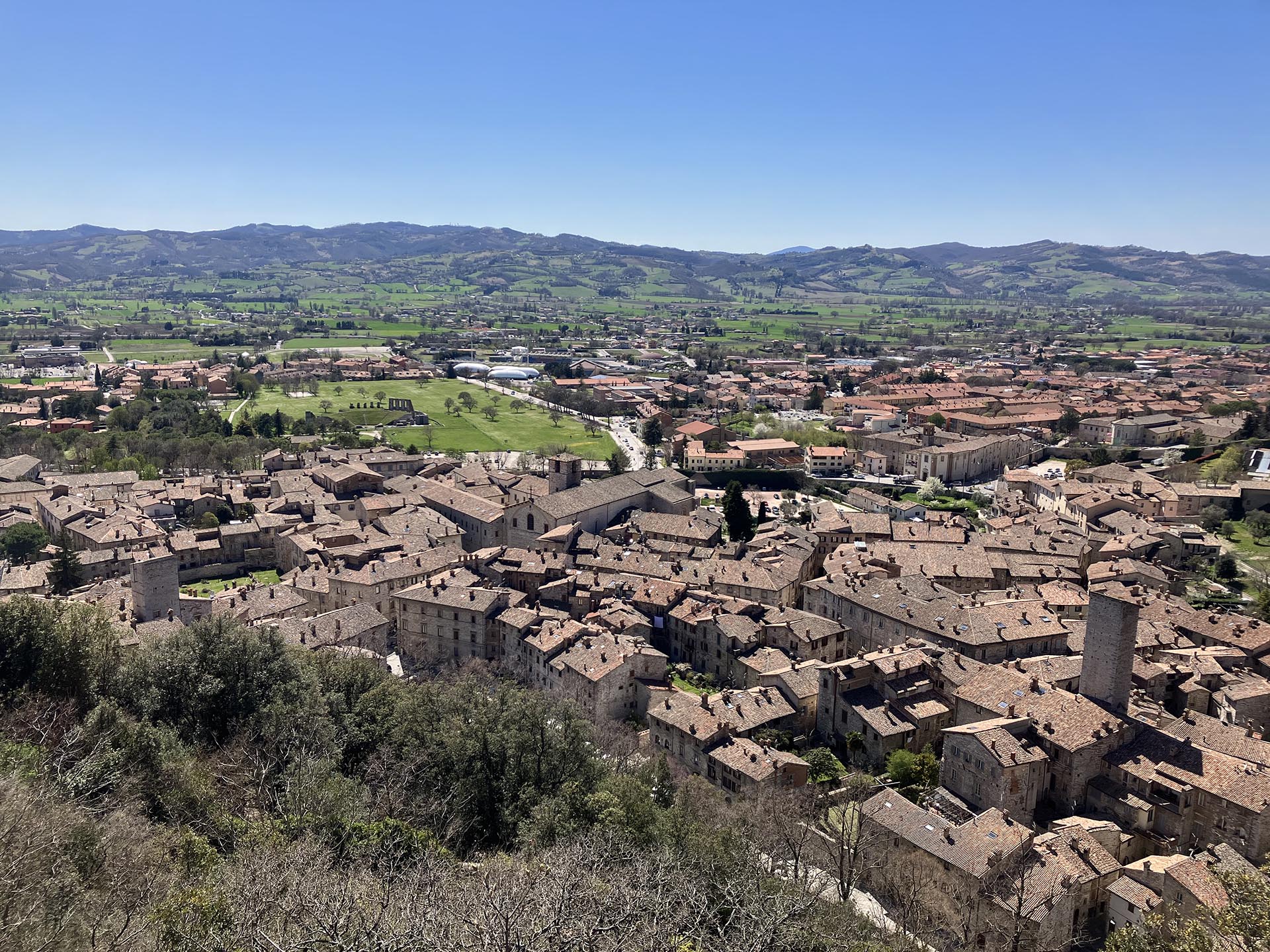Project Description
Gubbio
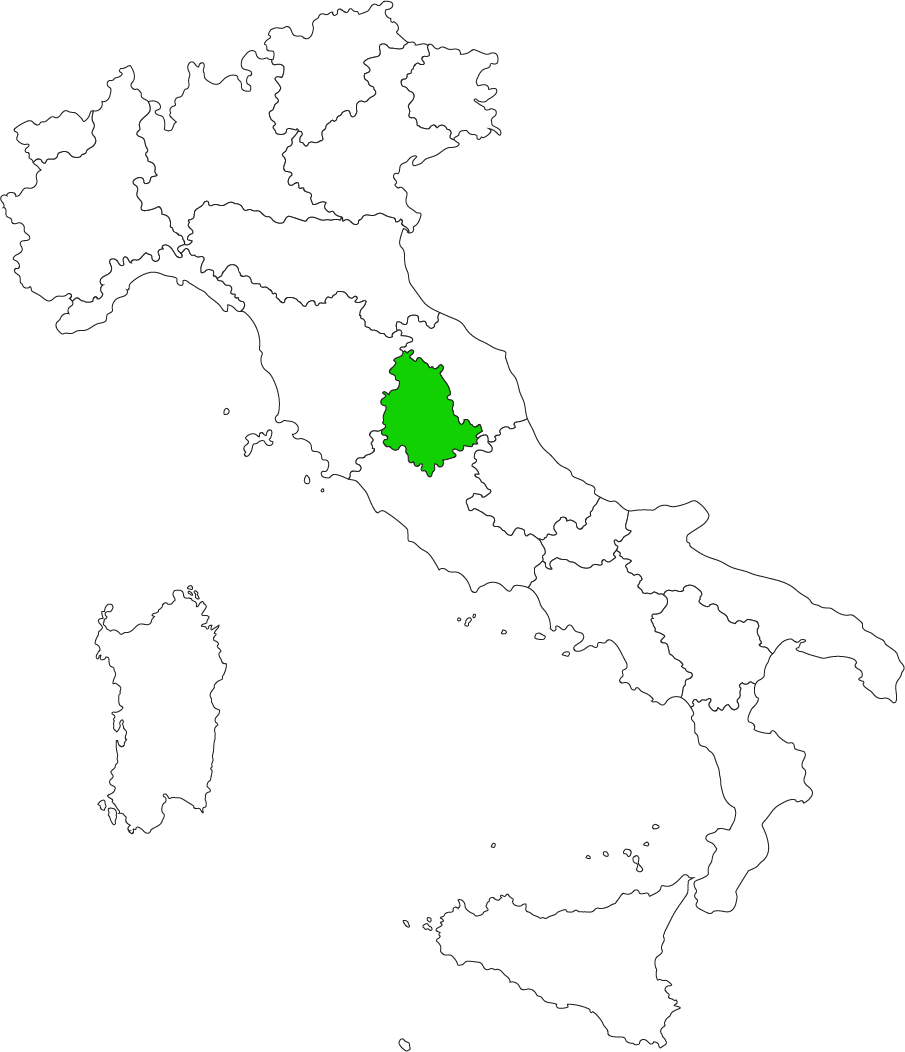
Gubbio

Where it is
“Freedom is participation, freedom is not sitting up a tree”, sang Giorgio Gaber in one of his most famous songs, the thinking of an entire generation.
Following the steep curves climbing from Mocaiana, a tiny village in the Gubbio Municipality, going towards Mount Cerrone, where we come across the wind turbine of the cooperative ènostra, it’s easy to think that, decades later, freedom is also “self-generation”. And it is for this reason that in this remote area, invisible to the eye from the Gubbio plains, and where it is easier to come across roe deer and wild boar than human beings, that the first privately-owned wind turbine in Italy was built in 2021. A turbine whose shareholders are the local citizens, and an example of one of the many other stories of the widespread desire for energy transition in the country.
| Legend |
|---|
 Wind Farm Wind Farm |
Browse the map and discover the places to visit, where to eat and where to stay, chosen by Legambiente
As well, the surrounding countryside is breath-taking. An unspoiled nature, of silence, and spectacular views across the mountainous Serra di Burano, the Apennine backbone marking the border with the Marche Region. On the one side, Gubbio, on the other, the town of Fano. The Burano area was once densely populated right up to the war, then slowly people began to move away. Today, there only remain small hamlets scattered across wide expanses, all beginning with the suffix cai (cai leto, cai Mariotti) of Venetian origin.
The legend goes that, around 1300, some nobles of the Serenissima Republic left Venice fleeing from the nightmare of the plague and took refuge in these lands granted to them by the Duke of Urbino. Lands that, today, are drawing back people thanks to the kingly truffle. The precious black truffle, but also the highly prized white truffle (costing up to €4,000 a kilo), being quite difficult to find. It can be recognised by its round but, at times, irregular shape, and by its yellowish-white colour. Most of the truffles of the famous Acqualagna Fair, the most important of its kind in central Italy, are the tuber magnatum pico coming from this zone.
Typical cuisine
For a first-hand experience, we suggest making a stop at least once at Baffone, an old tavern to be found in a prime position immersed in the green of the Serra di Burano Park. Other than trying the typical home cooking influenced by local traditions – and, therefore, with truffles in all the sauces – get the son, the present owner, to tell you about the story of his father, Ubaldo Casagrande, the famous character called Baffone, due to his long and bushy moustache, who opened the tavern in 1985. An elegant farmer, still famous today for his plant grafts, he was also a great expert in the local traditional superstitions and medicinal herbs, which he had initially begun to administer for relief to friends and acquaintances with some minor ailments. Over time, his chiromantic abilities began to make him increasingly popular throughout the valleys in the area, to the point of turning him into a sort of local guru, with growing numbers of people seeking him out to relieve their sufferings, but also to be rid of imaginary curses. It was said that he only accepted offerings, never the sordidness of money. There are still some in these parts, who are convinced that Baffone still lives on to today.
Instead, an excellent opportunity for those who are in search of something more active is to embark on the Cammino di Francesco, a walking pilgrimage (although it can also be easily done by bicycle) of about 200 kilometres following in the footsteps of Saint Francis. It begins from the Sanctuary of La Verna in Tuscany, one of the most beloved places of the saint, crosses the National Park of the Casentino Forest and the hills of the Upper Valley of the Tiber River in Umbria.
The final stop, of course, is the Basilica of Saint Francis of Assisi, recognised as a UNESCO World Heritage site, where the remains of the saint have been preserved since 1228. However, apart from the strong ties linking Gubbio to Saint Francis, the leg that crosses these areas (Pietralunga-Gubbio, 26 kms) is an excellent opportunity to stop and visit a gem of medieval culture, as well as being one of the oldest and most splendidly preserved towns in Umbria.
What to visit in Gubbio
For a good starting point to have a panoramic 360° view of Gubbio, you can begin from the town’s superb balcony, that of Piazza Grande which rates as one of the most impressive works of medieval town planning. From the square, it is suggested to slowly climb up through the old town centre, situated at the foot of Mount Igino, finally reaching, on one side, the Gothic elegance of the cathedral, and on the other side, the Ducal Palace, commissioned to be built by Duke Federico di Montefeltro.
The actual famous small study (studiolo) dedicated to study and meditation, and the heart of the palace, is currently found in the Metropolitan Museum of New York, while, in Gubbio, a copy has been reconstructed. Winding your way up the steep climb, you soon come to the Basilica of Saint Ubaldo, where the body of Gubbio’s patron saint can be found.
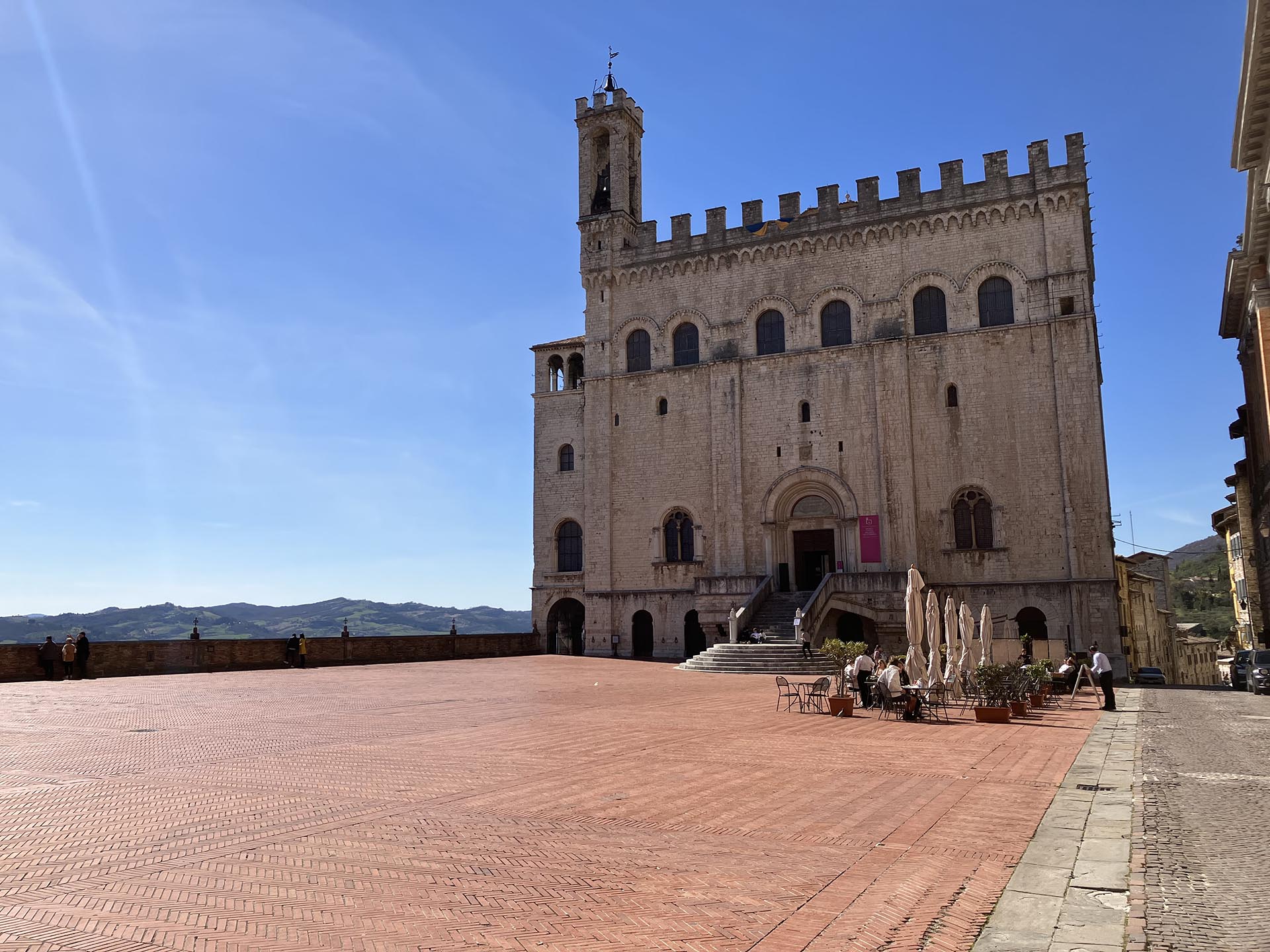
The eugubinian folk festival
It is here, at the foot of the basilica’s steps that, every May 15, the world descends, concluding with the famous and crazy Corsa dei Ceri (Candle Race). This is a very old Gubbio festival combining the sacred with the pagan, and for importance can easily be compared to the Palio Race in Siena. If, however, you are not an experienced candle-bearer, or you consider the idea of tramping up the mountain to the peak an arduous task, then a good solution is to take the panoramic cableway of Colle Eletto, functioning since 1960, which in little more than 6 minutes takes visitors from the 532 metres of the town’s historical centre (it starts from Via S. Girolamo) to the 803 metres of the top station. There is only one catch – to enjoy the fantastic view over all the valley of the River Saonda and the Tiber, you must not suffer from vertigo.
From the Basilica of Saint Ubaldo, you can make your way up the last stretch to the summit of Mount Igino, or, turn left and head towards the Bottaccione Gorge, a deep ravine with vertical walls between Mount Igino and Mount Foce. It is an easy track that follows an old medieval aqueduct constructed around 1300 by the town council to channel the water to a point just above the Ducal Palace and which remained functioning up to the 20th century. A panoramic walk of 2 easy kilometres (one way) which will transport you back in time, into history, geology and archaeology, and should not be missed.
